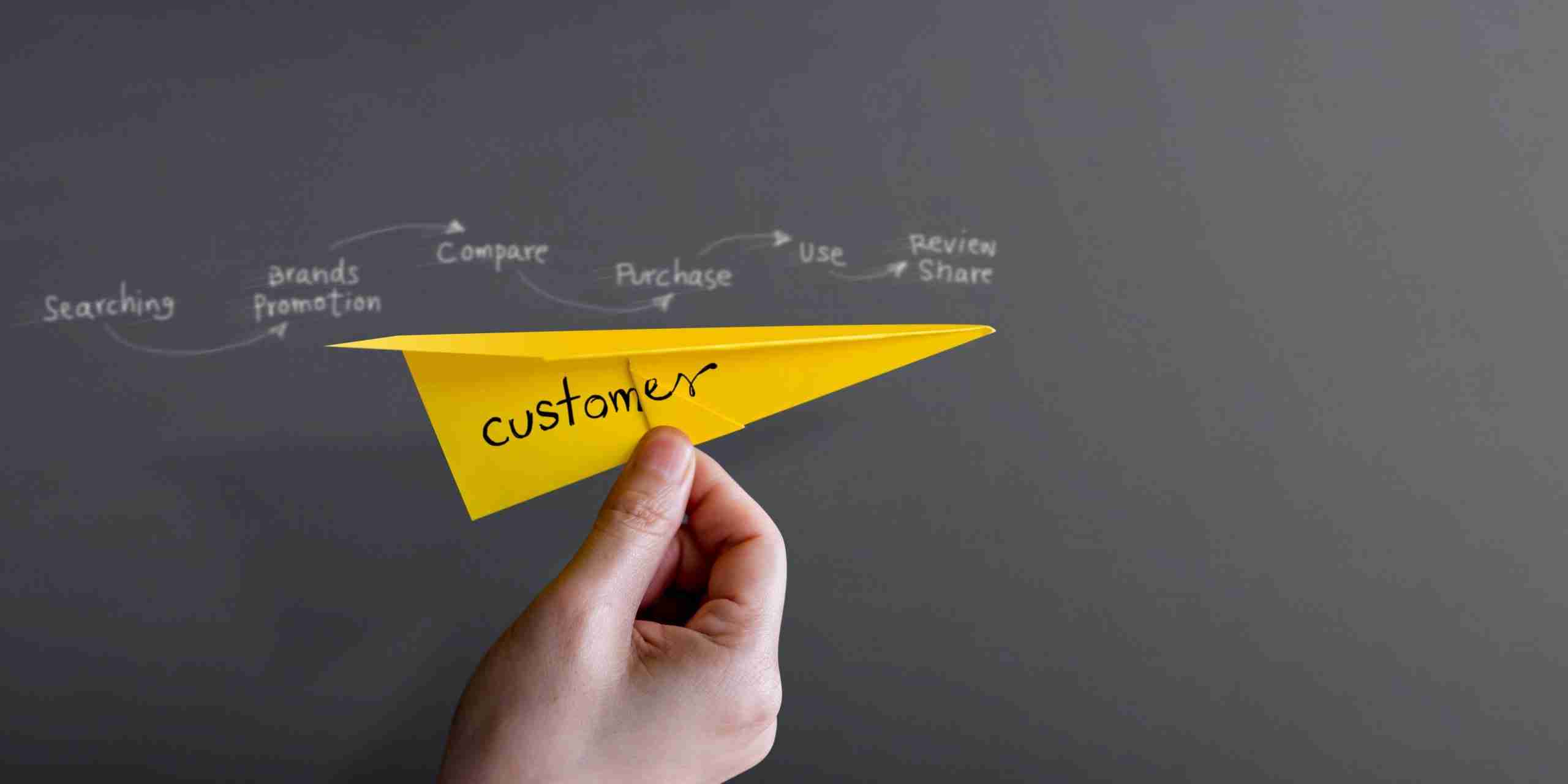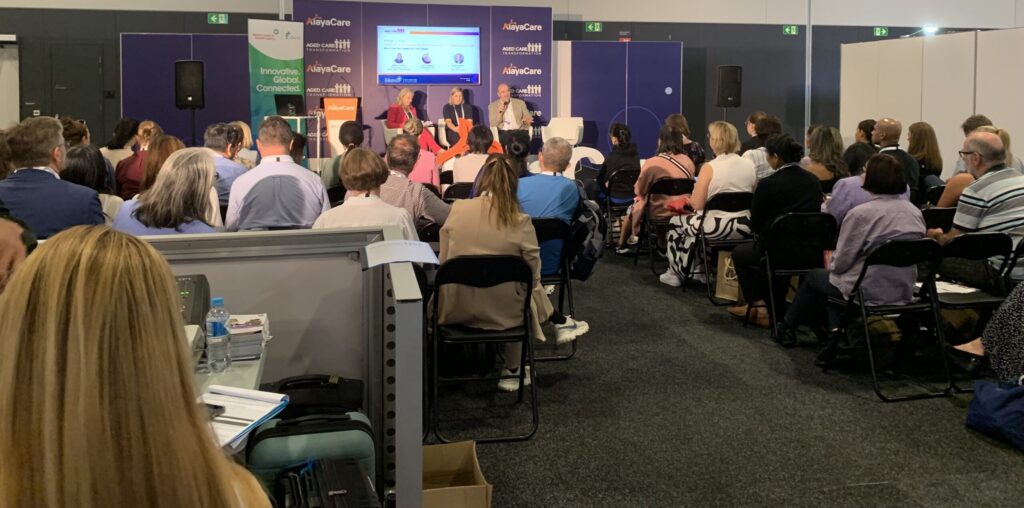CUSTOMER EXPERIENCE STRATEGY
WHAT IS IT & WHY IT MATTERS

What is a Customer Experience Strategy?
A Customer Experience Strategy (CX Strategy) is an organisation’s overarching plan to enhance their customers experience in every interaction in the Customer Journey. The Customer Experience Strategy fundamentals includes customer research, journey maps, culture change, and other elements. These elements help the organisation create a great customer experience.
How to Create a Winnng Customer Experience Strategy
Customer experience (CX) is everything related to a business that affects a customer’s perception and feelings about it. It is the overall “experience” that the customer goes away with after every interaction and transaction. Humans remember experiences – the positive as well as the negative. To grow an organisation, it’s important to always provide great customer experiences, no matter which department they interact with.
Every interaction between customers and businesses has an impact on the relationship, either positive or negative. This includes phone calls, advertisements, and bill payments.
Most importantly, it’s how customers view those experiences in aggregate that matters.
“Customer experience is how a customer feels about the sum of their interactions with a business,” says Dave Dyson, Sr. Customer Service Evangelist, Zendesk. Customer experience encompasses every interaction between a customer and a company. These interactions span across various stages, such as marketing, sales, product/service quality, and post-purchase customer service.
A customer experience strategy is important for a business to survive and grow. Without one, an organization can be at a disadvantage compared to its competitors. A CX strategy is important for an organisation’s success by making sure everyone focuses on the customer experience.

WHAT’S THE DIFFERENCE?
Customer experience vs customer service
Customer service is only one aspect of the customer journey. Customer experience, on the other hand, encompasses all the interactions a customer has with a brand.
In other words, customer service is one piece of the customer experience puzzle.
While organisations think they are delivering an amazing customer experience, they may actually only be delivering an adequate level of customer service. Nowadays, customer-service staff often ask if there’s anything else they can do for you. However, this actually makes customers feel unhappy. It is a non-sensical question.
If there was something else to do, the caller would request it. If there isn’t, and usually there isn’t, what is the point of the question?
To achieve a great customer experience, we must provide great customer service. On the other hand, the company might provide great customer service even if the overall customer experience is very poor. Customer experience is your customers’ holistic perception of their overall experience with your business or brand.
To truly be customer-centric, an organisation must optimise the customer experience in all areas.
HOW DOES THIS HELP YOU?
Why being customer-centric matters
In the past, numerous organisations became complacent. They believed that their customers would always return and that their competitive advantage would shield them from new competitors.
However, these organisations are now facing difficulties or have ceased to exist. Now, these organisations are struggling or no longer exist. These organisations felt secure in their position, misguided in the belief that the barriers to entry were high enough and customer loyalty was strong enough to ward off any competitor who claimed to offer a superior customer experience.
With the advent of the internet and the digital era, we now know the belief to be a fallacy. The perceived competitive advantage is impenetrable until it isn’t. When a company stops prioritising customers, it becomes vulnerable to customer-focused competitors. Complacency seeps in and an inward focus becomes the dominant narrative.
This is shown by this quote from the CEO of the Hilton Group Christopher Nassetta in 2015 when discussing the threat of Airbnb, “I strongly do not believe that they are a major threat to the core value proposition we have. I think it’s extremely hard for them to replicate what we’re doing”. Hilton could have prevented Airbnb from surpassing the top five hotel chains if they had a better understanding of their customers.
Industries such as media, retail, and travel have undergone significant changes. Similarly, financial services, utilities, and health are also experiencing major transformations. The common thread that links these industries, was the lack of customer-centricity from the established players.
Their customers’ expectations of great customer experience had changed. However, they were still relying on what had worked before. They believed that this would ensure their future success.
Poor customer experience just doesn’t cut it anymore. Customers now have a range of options to choose from and will go elsewhere if their expectations aren’t being matched.
No barrier to entry is high enough to prevent the tech behemoths (e.g. Amazon, Google etc.) from entering the market. If businesses see a chance to make customers happier and increase their worth, no business plan is secure.
The organisations that have survived and become stronger are the ones that have made the customer their top priority. Customer-centric organisations have built robust business models that rely on delivering excellence in customer experience over all else. This has built customer loyalty by focusing on the customer’s lifetime value over any short-term gains that could diminish their experience.
HOW DOES THIS HELP YOU?
Defining a great customer experience
- Make listening to customers a top priority across the business
- Implement a system to help you collect feedback, analyse it, and act on it regularly
- Reduce friction and solve your customers’ specific problems and unique challenges
- It’s not rocket science: a good customer experience comes from asking your customers questions, listening to their responses, and actioning their feedback
ELEVATION
Moments of elevation are experiences that rise above the routine. They make us feel engaged, joyful, surprised, motivated
PRIDE
Moments of pride commemorate people’s achievements. They are showing us at our best: when earning recognition, when we’re conquering challenges and showing courage.
INSIGHT
Moments of insight deliver realisations and transformations.
CONNECTION
Moments of connection bind us together
6 KEY ELEMENTS
How to create a Customer Experience Strategy: Six Key Elements
We at The Strategy Group have identified six steps required to deliver a great customer experience. These are as follows:

UNDERSTAND WHAT IS IMPORTANT TO YOUR CUSTOMERS
There is no point trying to guess what is important to customers without getting out of the building and spending quality time with them in open-ended qualitative interviews. A good customer experience strategy must start by gaining a deep and nuanced understanding of the customers of an organsiation.
This exercise is usually best delivered by an external company. First, customers will be far less inhibited in opening up to an independent organisation. Second, there should be no bias when questioning, something that often creeps in if it is done by organisation itself.

GENERATE INSIGHTS FROM INTERVIEWS
Understanding your customers’ needs and wants has become essential to ensuring your organisation is future-proof. Listening empowers you to learn from and talk to your customers to create ever-improving experiences.
Businesses with quality data are more likely to collect actionable customer insights, which can help them grow their bottoms line in the long run.
When consumer insight research is conducted properly, it will improve the effectiveness of how a company communicates to its customers, which is likely to change consumer behaviour, and therefore increase sales.

DEVELOP A CUSTOMER JOURNEY MAP
Understanding how your customers interact with you holistically and across their whole journey is crucial to delivering an enhanced customer experience.
A journey map is this visual representation of that customer journey. It helps tell the story of your customers’ experiences with your brand across all touchpoints. The trick here is to generate the journey map from the customers’ lens, not from the inside out.
The other important element in this process is to ensure the journey map includes the “emotional” journey i.e. how did the customer “feel” along the journey, where were they happy, where were they frustrated.
Journey maps also gives managers an overview of the customer’s experience. They will see how customers move through the sales funnel, helping them identify opportunities to enhance the experience. The map will show how enhanced customer service can differentiate the organisation’s digital experience.

ELEVATE THE HIGHS AND MITIGATE THE LOWS
Once you have created a journey map that outlines the various touchpoints and emotional experiences of your customers, you can identify the high and low points in their journey. These high and low points represent opportunities to either amplify the positive experiences or address any negative ones. By creating strategies to elevate the highs and mitigate the lows, you can create a more robust and meaningful customer journey.
For example, if a customer has a particularly positive experience at a certain touchpoint, you may want to consider how you can build on that experience and make it an even more delightful high impact experience. On the other hand, if customers have particularly negative experiences at particular touchpoints, you can use the journey map to identify where the issue occurred and develop strategies to address it and prevent it from happening again in the future.

RE-IMAGINE THE JOURNEY AND EXPERIENCE
Routine is the enemy of innovative thinking, but so is precedent. Sometimes, we struggle to shift away from how we’ve always done things. Imagining a clean slate can help you change perspective and think outside the box as to what the customer journey could look like in an ideal world. An example of this could be how your organisation could engage with your customers using new digital technology.

EMBED THE STRATEGY INTO THE ORGANISATION
Given the complexity of customer-centric transformation, it is easy for leaders to get distracted by changing priorities and short-term thinking. However, to realise the full business case benefits, it is crucial to embed new ways of working. Leading organisations must ensure they approach transformation as an ongoing process for continuous improvement – rather than a one-off, linear change.
The customer holds the keys to unlocking growth for any organisation. Through championing the voice of the customer and delivering a truly great customer experience, your organisation can identify and unlock areas of unforeseen growth and future-proof your business model to beat off competition.

EMPATHISE
Listen to and understand your customers People want what they want when where and how they want it. Expectations have shifted over the internet era and will continue to do so over time. To stay relevant, we need to be two steps ahead by knowing what customers want before they do. We can start to do this by observing and empathising with their needs, pains and jobs to be done.

ANALYSE
Analyse and aggregate insights Customers only care about what organisations are doing for them. If we understand what they do, we can design experiences that delight them. By mapping customer insights to your organisation’s value propositions, products and services we can find gaps and opportunities.

STRATEGISE
Design a strategy to delight customers It’s all about experiences. The reality is, nobody wants your product or service. Nobody wants a mortgage – they want the experience of living in the house. Design a strategy to upgrade the customer experience and evolve your value proposition to meet it. If customers continue to be delighted, they’ll keep coming back.
Customer Experience Strategy Insights

The Significant Decline of Customer Service in Australia
How often have you walked into a bank

Insights from the Australian Healthcare Week Conference
A few weeks ago, on March 20th and

Unveiling the Power of Customer Centricity
In a compelling webinar that’s changing the conversation
Why The Strategy Group should be your strategy partner
We will work with you to design and support implementation of a strategy for your business unit, for your entire organisation, or for any segment of your organisation where a fresh approach will add value.
We will use a combination of globally-recognised leading-edge processes, coupled with our proprietary validated toolbox to develop a bespoke, customised strategy, which we can assist you in implementing, that will deliver tangible impact and value to your organisation, employees and customers.
We have been designing and implementing strategy solutions since 2003 and we have the expertise and the experience not only to deliver, but to overdeliver.




